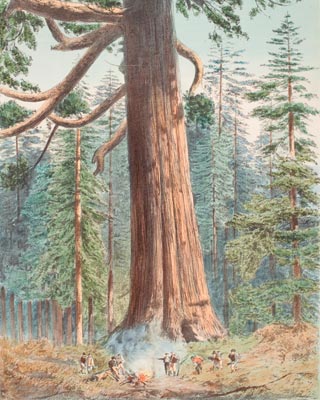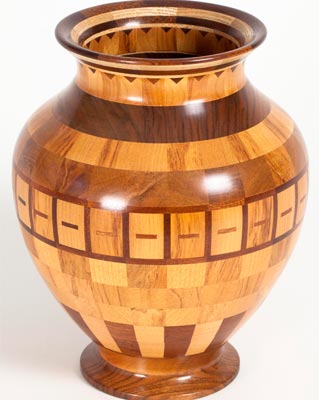For centuries scientists, amateur enthusiasts and artists have studied botanical specimens. In contrast to Ravenscroft, who sought to be an expert in the identification and history of trees, Lewis Benschop used his knowledge of the properties of timber to create unique craft pieces. Ravenscroft used illustrations and descriptions to classify specific trees while Benschop’s sample set allowed him to quickly identify specific timbers. Many of Benschop’s works incorporate multiple woods including native conifers such as kauri, matai and rimu.

From British Pine to Native Woods
The three volumes that make up Pinetum Britannicum represent the best of nineteenth-century scientific enquiry and – for the keen observer – illustrate its more competitive side. Edward Ravenscroft’s ‘descriptive account of hardy coniferous trees’ is a treasure trove whose contents range from accounts of botanical expeditions, to a summary of biblical references to the cedar of Lebanon. Before they entered the University of Canterbury collection in 1973 these volumes were part of a bequest to the Fairlie Library by R L Banks. The latter should probably be identified as the ‘Clerk and Engineer’ for the Mackenzie County Council in 1903.
 'Sequoia Wellingtonia'
'Sequoia Wellingtonia'
Edward Ravenscroft, The Pinetum Britannicum: A descriptive account of hardy coniferous trees cultivated in Great Britain, 3 vols (Edinburgh: Blackwood; London: E Ravenscroft, 1884)University of Canterbury Library

Ornamental wooden urn shaped vase made from multiple laminated native timbers, made between 2000 and 2010.Canterbury Museum, 2011.62.3
Dutch born Lewis Benschop immigrated to Christchurch at age nineteen after completing an apprenticeship in furniture making and restoration. In addition to working in the furniture industry, Benschop’s passion for woodworking led him to create many unique pieces in his own time. This ornamental vase is made from multiple laminated timber strips and shaped segments, which were then turned into the hollow urn shape using a wood lathe. This style of woodturning requires precision in working out the size and position when gluing the laminated pieces, as any miscalculation will result in an irregular and unbalanced composition.
Want to know more?
Euan Mason, 'Edward Ravenscroft, Pinetum Britannicum', in Treasures of the University of Canterbury Library, ed. by Chris Jones & Bronwyn Matthews with Jennifer Clement (Christchurch: CUP, 2011)